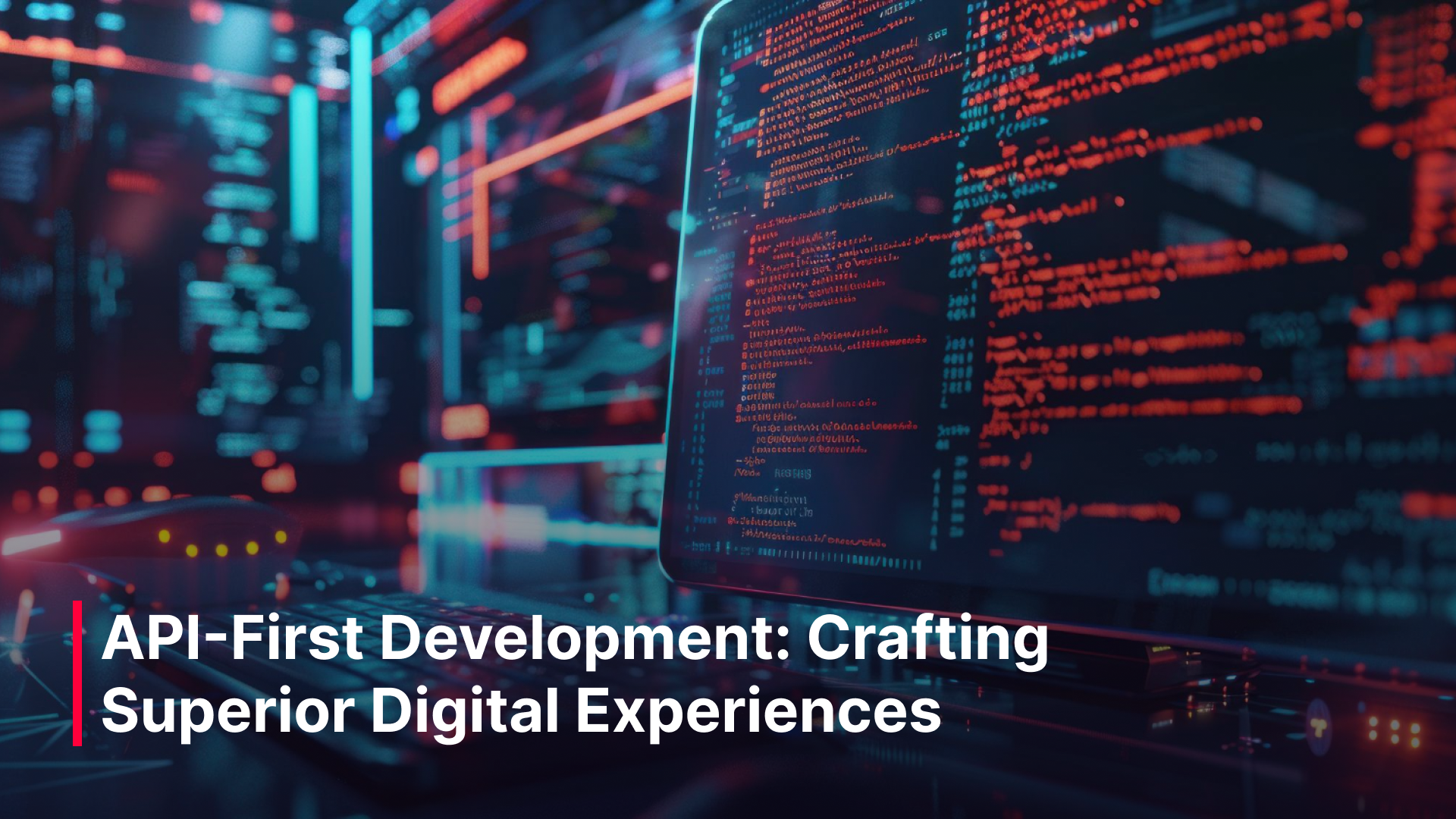User expectations evolve at lightning speed, businesses must prioritize agility, scalability, and superior user experiences. This is where the API-first development approach comes into play, offering a blueprint for creating responsive, seamless, and future-ready digital experiences.
API-First Development Explained: Redefining Digital Infrastructure
Traditionally, APIs have been developed as secondary components to support applications, often crafted only after the main system architecture is in place. API-first, by contrast, reverses this approach, placing APIs as the starting point and central structure of application development. With API-first, APIs become the core building blocks, defining the architecture and user experience from the outset. This approach fundamentally alters how applications are built and how they evolve over time, leading to advantages in agility, modularity, and scalability.
Instead of applications merely having APIs, API-first enables them to be defined by their APIs, promoting a platform-agnostic, service-oriented structure that can be integrated, extended, and optimized independently of the front-end experience.
Benefits of API-First Development for Enterprises
API-first development is rapidly gaining traction in enterprises due to its ability to address many pain points faced by CIOs and CTOs, especially in managing sprawling digital ecosystems, delivering consistent user experiences, and maintaining flexible, cost-effective infrastructures.
- Enhanced User-Centricity and Experience Consistency
APIs drive all front-end components—web, mobile, and IoT—ensuring users receive a consistent experience across touchpoints. This modular approach is ideal for enterprises with multi-channel strategies, as it allows for seamless integration across a broad spectrum of devices, platforms, and third-party systems.
In industries such as retail, banking, and healthcare, where user interactions must be streamlined and data must remain accurate, API-first ensures that every endpoint, whether on a mobile app or an in-store kiosk, provides up-to-date information from a single source of truth.
- Accelerated Development Cycles and Faster Time-to-Market
API-first enables concurrent development, where back-end and front-end teams can work simultaneously, using the API contract as the blueprint. This not only reduces development cycles but also accelerates deployment and allows rapid iterations based on user feedback.
With clear API specifications in place, third-party providers, contractors, and cross-functional teams can develop independently without creating dependencies, removing typical bottlenecks associated with traditional, sequential development.
- Scalability and Resilience at the Core
The modular nature of API-first allows individual services to be scaled independently based on demand, providing a resilient structure that can absorb traffic spikes, scale smoothly, and adapt to evolving market needs.
By implementing versioning and continuous API lifecycle management, enterprises can add new features, support legacy systems, and maintain backward compatibility with minimal disruption—crucial for businesses with complex, evolving product lines.
- Cost Optimization through Component Reusability
APIs, when properly designed, are reusable assets, allowing multiple applications to share the same core functionalities. This reuse minimizes redundancy and reduces development and maintenance costs over time.
API-first development supports microservices architectures that offer granular control over resource allocation, preventing the need to scale entire applications for minor changes or enhancements.
Strategic Pillars of API-First Development
For an API-first approach to reach its full potential, it must be supported by a robust framework of planning, design, security, and continuous improvement. Here are key elements that elevate an API-first strategy to align with enterprise goals.
- Design-First Philosophy and API Contracts
In API-first, the design-first philosophy involves creating API specifications as the initial development step, using tools like OpenAPI and Swagger to document endpoints, data models, and interactions. This specification serves as a contract, ensuring that all stakeholders—developers, UX/UI designers, and product managers—are aligned on how the API will function and what data will be exchanged.
By mapping user requirements directly to the API layer, enterprises can ensure their systems are built around end-user needs, reducing the need for extensive revisions and allowing developers to better plan for future integrations.
- Focus on Security, Compliance, and Data Privacy
APIs are often the primary entry points for data in applications, making robust security protocols essential. OAuth, SSL/TLS encryption, and API gateway configurations are vital, protecting data at rest and in transit.
Compliance is increasingly important in sectors such as finance, healthcare, and e-commerce, where data handling must comply with standards like GDPR, HIPAA, and PCI-DSS. An API-first approach allows enterprises to bake these requirements directly into the architecture, ensuring both compliance and data integrity from the ground up.
- Robust API Documentation and Developer Enablement
High-quality, comprehensive documentation is indispensable, enabling internal teams and external partners to use, test, and integrate with the APIs seamlessly. Automated documentation tools like Postman and Redoc help keep API documentation up-to-date as the API evolves.
Developer portals and API sandboxes further foster a collaborative development culture, providing testing environments where external developers can experiment without impacting live systems. This enables faster partner onboarding and integration while fostering a thriving developer ecosystem around your API services.
- Automated Testing, Monitoring, and Analytics
Automated testing, from functional to load testing, helps ensure that APIs perform as expected under various conditions. This is crucial in catching issues early and reducing the risk of performance bottlenecks and downtime.
Monitoring APIs in production through metrics such as latency, error rates, and traffic patterns allows CIOs and CTOs to make data-informed decisions, optimize performance, and forecast scaling needs. Analytics platforms like Datadog and New Relic provide real-time visibility, allowing enterprises to keep their APIs running efficiently while identifying new opportunities for improvement.
Real-World Application
Consider a multinational financial services firm aiming to create a consistent customer experience across online banking, mobile apps, and partner services. With API-first development:
- The core banking functionalities (balance inquiries, fund transfers, loan applications) are standardized through a unified API layer.
- Each user-facing application (web, mobile, partner portals) consumes the same core APIs, ensuring consistent data and experience regardless of the access point.
- With versioned APIs, the firm can release updates incrementally, enabling new features to be added without affecting existing services or causing disruptions.
API-first development not only improves time-to-market for new digital products but also creates a solid backbone for customer-facing applications, ensuring that each channel stays current with minimal rework or refactoring.
A Strategic Imperative
For enterprises looking to stay competitive in a digital-first world, API-first development isn’t a trend but a fundamental strategic approach that aligns technology with business objectives, accelerates growth, and improves customer satisfaction. By making APIs the core building blocks of software design, organizations can deploy scalable, reusable, and secure applications that serve as a foundation for continued innovation.
At Bytex, we are committed to helping tech companies realize the full potential of API-first development. Ready to take your digital strategy to the next level? Just get in touch!


